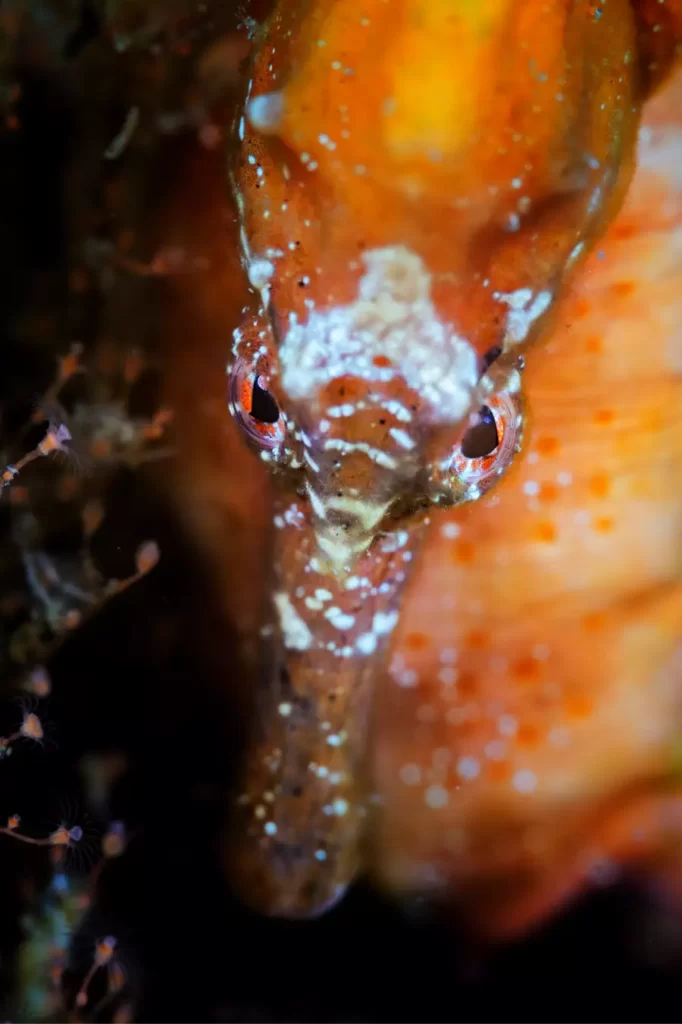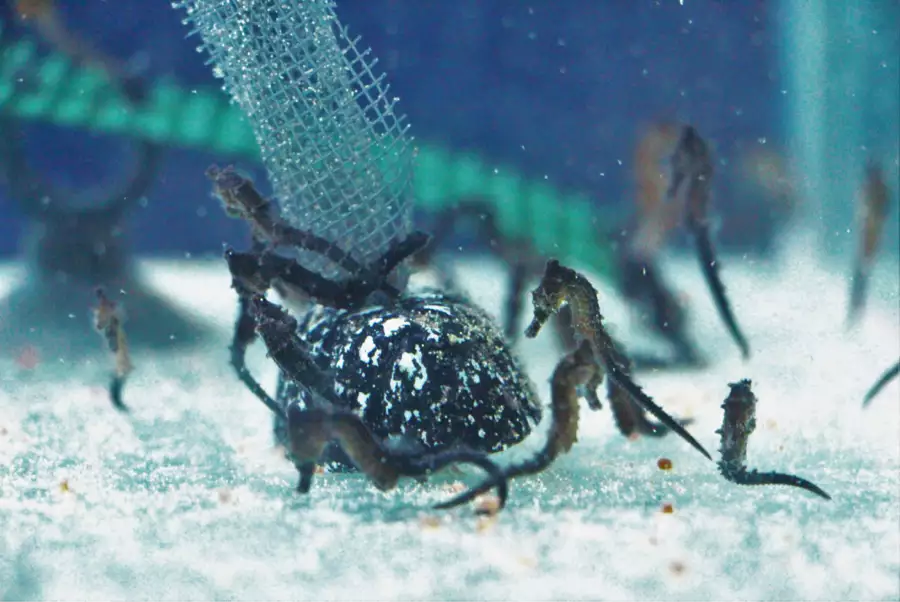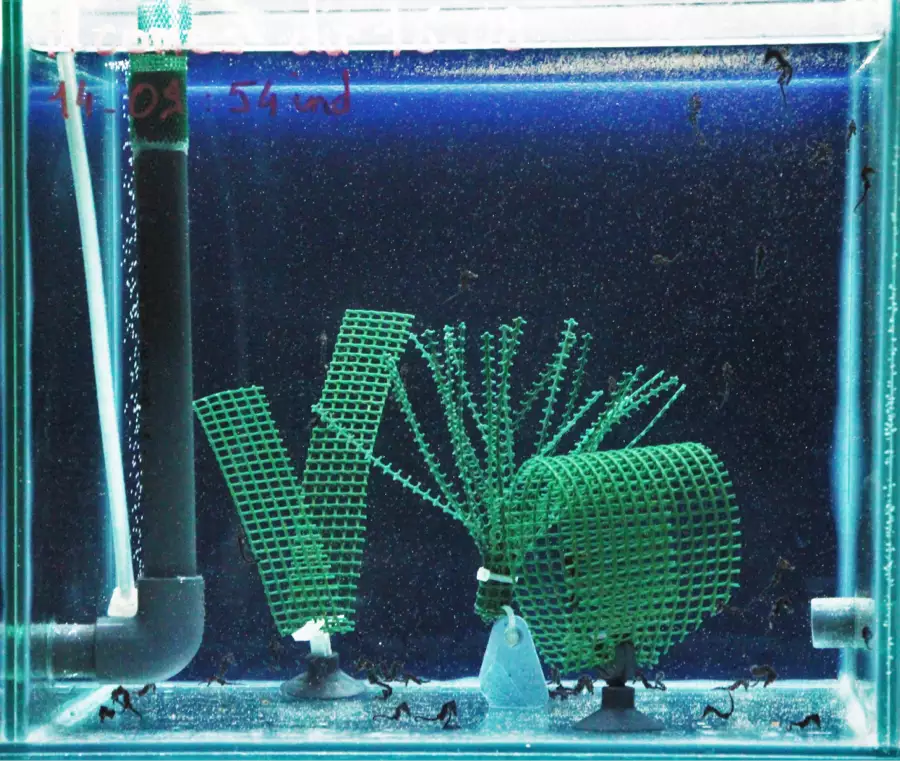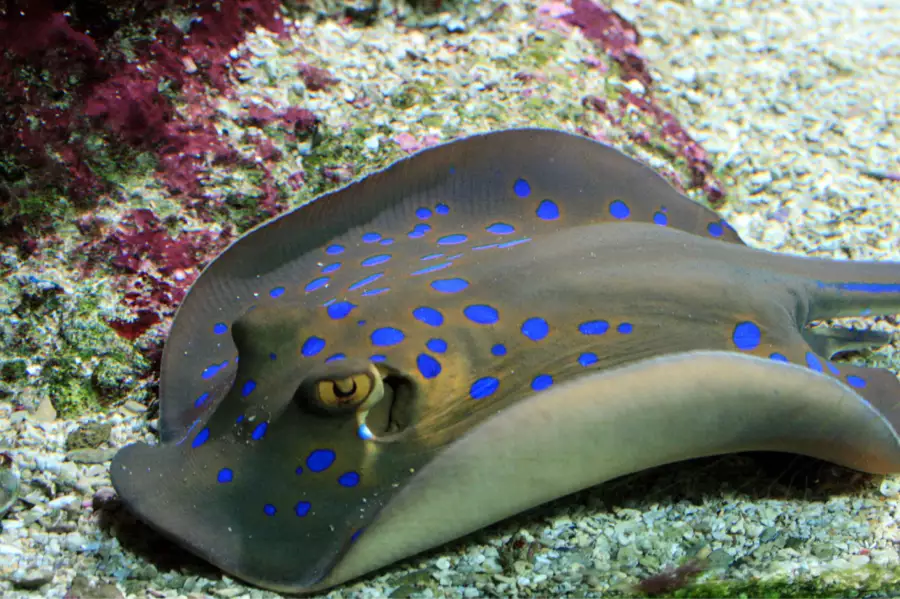Reproduction

The number of eggs that a male can carry varies from a few dozen in the short-snouted seahorse (Hippocampus hippocampus) to nearly 650 in the spotted seahorse (Hippocampus erectus) since it has a huge pouch. The eggs, with a maximum diameter of 3 mm, will hatch in the brood pouch and the embryos will remain there until they are fully developed.
At the end of this gestation period (from a few days to 2 months), the young seahorses are expelled. Latched onto a supportive object at the bottom of the sea, the male expels them in small groups by contracting back and forth. Once they have all escaped, the pouch shrinks again. This is exhausting for the male, who will need some time to regain his physical condition.
Barely measuring 5 mm long, the young will try to find a support to cling to, sometimes to their siblings from whom they will still have to free themselves without getting tangled. They will then begin to pick up any food that comes their way, if it suits their tiny mouths.
Seahorses
Courtship rituals between a pair of seahorses resemble a slow and graceful dance which begins with foreplay, after which the male and female will be intertwined, cheek to cheek and tails tied. The female will then press her belly against that of the male and after several successive shivers that run through both of their bodies, the male will then half-open his brood pouch so that the female can spray her eggs into it. The eggs are fertilised during the transfer process.
Once the eggs have been laid, the pouch is sealed and the female leaves to rest. The male is then responsible for incubating and protecting the eggs. The walls of the pouch thicken and become vascularised. The placenta supplies oxygen and secretes the nutritive liquid the embryos need to develop.



The young will grow in their mother's womb, protected from predators. While developing intra-uterine, the embryos feed on yolk and then on a kind of uterine milk secreted by the mother containing mucus, fat and proteins. The gestation period lasts between four and twelve months. A litter can have up to seven pups that are less than 15 cm wide. The male reaches sexual maturity when the width of his disc reaches around 20 cm.
Blue-spotted rays
This species of ray is ovoviviparous: females do not lay eggs but rather give birth to live young. During gestation, there is no direct link between the mother and pup through a placenta. Put simply, while the fetus develops inside the mother's body, it feeds on the yolk of its egg.
The breeding season lasts about four months, from May to August. The male clings to the female by biting one of her wings, then holds on to her to copulate. With one of his two claspers, he will penetrate the female and release his sperm inside her. This is called internal fertilisation.
